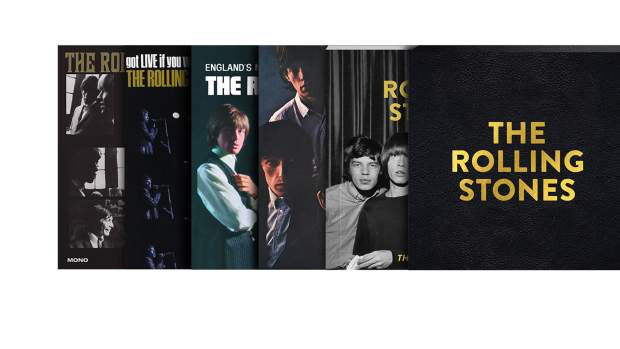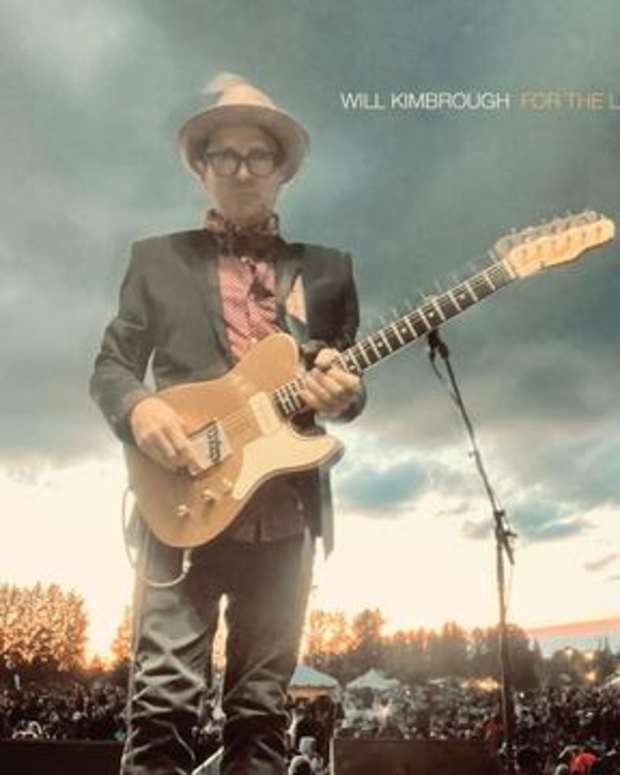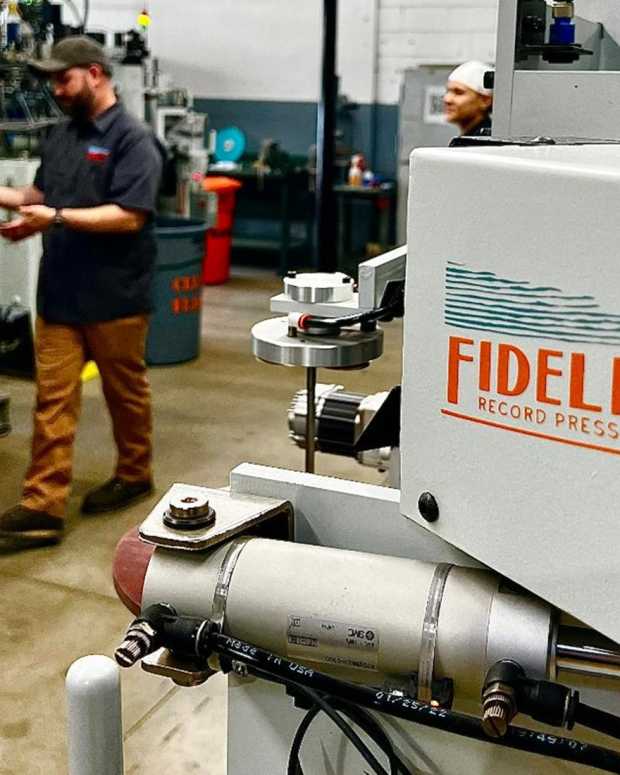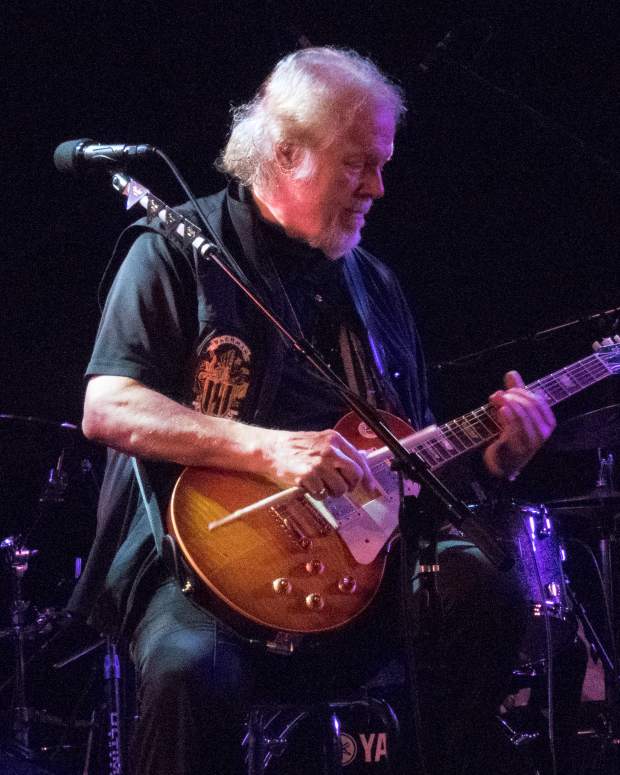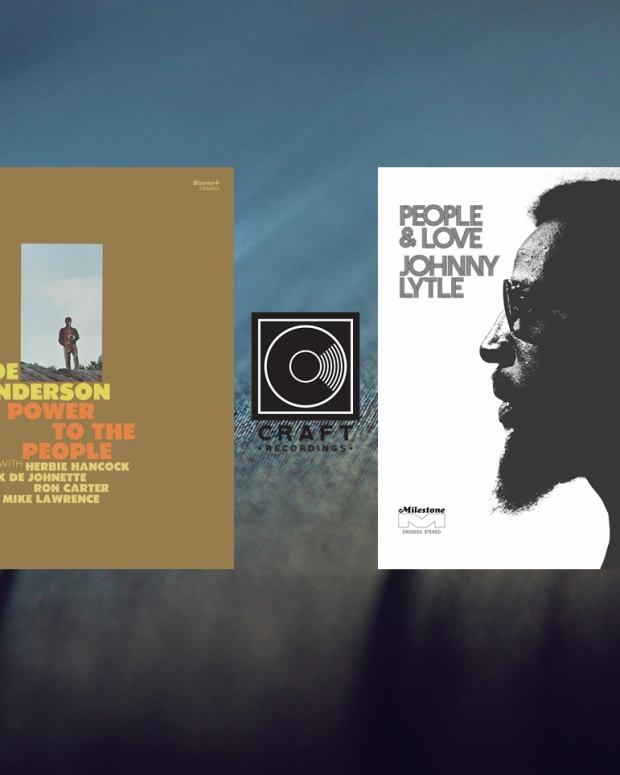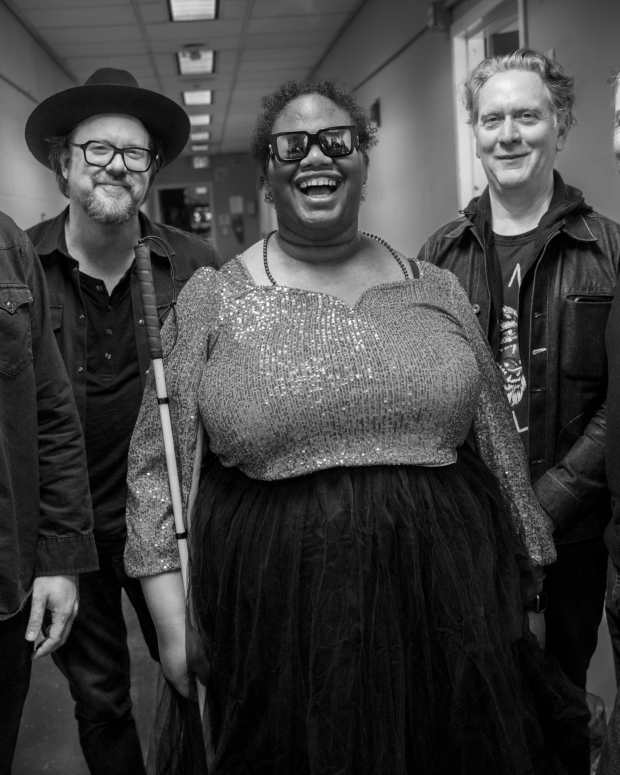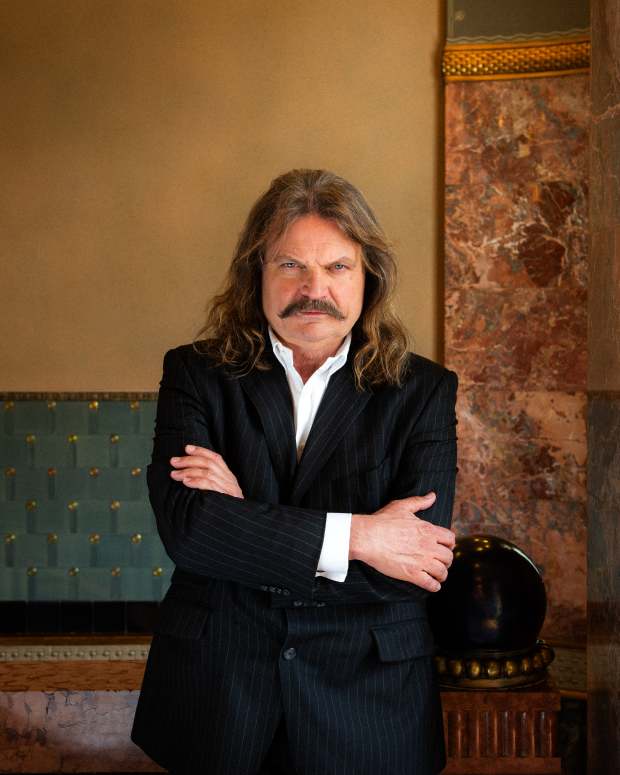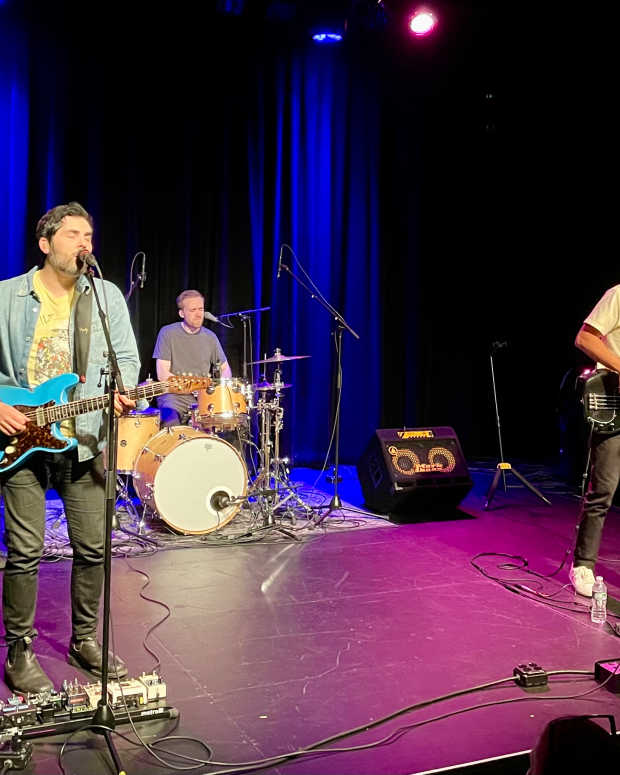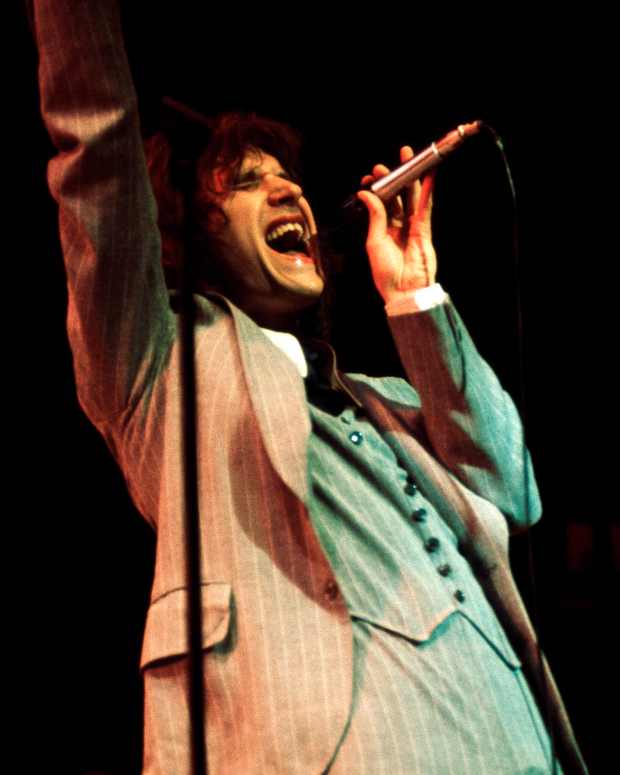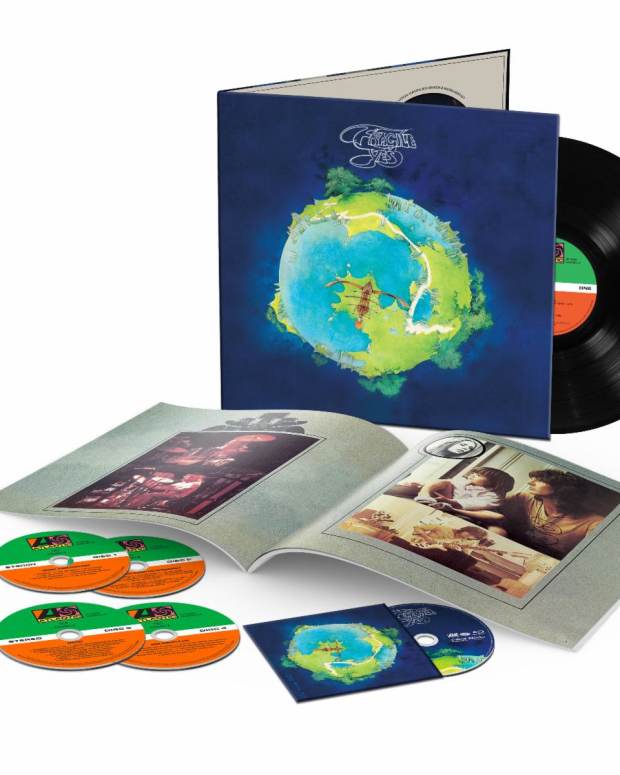Guitarist Gary Pihl leaves his musical mark across decades, genres
By Jeb Wright
Gary Pihl has been hanging around the band Boston, playing guitar since the “Third Stage” album was released in 1986. Pihl and his Boston bandmates are back in a big way with a new studio album, “Life, Love & Hope.”
A solid guitarist with an impeccable work ethic and a passion for excellence, Pihl is unassuming, kind to fans and journalists, and possibly about as far from being a rock star as a guy can be. Yet, everywhere you turn, it seems that Gary Pihl’s name will surface somewhere along the line, in a Six Degrees of Kevin Bacon kind of way. Perhaps that’s because Pihl has racked up an impressive resumé, performing with hitmakers ranging from Sammy Hagar to Night Ranger to Norman Greenbaum. He also likes to stay busy, as evidenced by his side project with a couple of his Boston bandmates called Color Three.
Goldmine put Pihl on the spot to dig deeper into his past and get his take on the new Boston album.
GOLDMINE: You have been with Boston since “Third Stage.” When did you first know that Tom Scholz was ready, after more than a decade, to create a new Boston album?
GARY PIHL: I don’t think Tom ever stops thinking about music. He’s always playing ideas, so he probably started working on “Life, Love & Hope” as soon as “Corporate America” was finished.

You may not be able to pick guitarist Gary Pihl (right, with Boston founder Tom Scholz) out of a police lineup — unless, of course, you witnessed his performance in the video for Sammy Hagar’s hit, ‘I Can’t Drive 55,’ in which Pihl and the rest of Hagar’s backing band star as his pit crew (and eventual cell mates).
GM: Let’s jump into a hard question. Tom is your friend. He is a creative guy. Because of his past success, he is always judged against his past work. In his case, that past work is one of the greatest rock albums of all time, the self-titled “Boston” debut. How does this, in your mind, affect how Tom ticks when it comes to music?
GP: I think the phrase that comes to mind is “Don’t Look Back!” Seriously. I’ve never heard him say, “I want to copy the first album.” He’s always exploring new territory, but for live performance, we try to reproduce the essence of all the records as best we can.
GM: I will put you on the spot … what are your favorite tracks?
GP: “Sail Away” is my favorite song, but I think Tom’s solo on “Someday” is brilliant!
GM: You recently released a CD of another band, called Color Three, with members of Boston. Tell me about that.
GP: Color Three came together when Kimberley Dahme was asked to perform at a veteran’s benefit show in Chicago. As a singer-songwriter, she does lots of gigs on her own, playing acoustic guitar. Sometimes, I join her on acoustic, and we play songs from her solo albums. The Chicago promoter suggested that she bring a backup band, because it was going to be a large outdoor show with other rock bands. She called me to help put some people together, and I suggested our Boston drummer, Jeff Neal.
We wanted to play some music that we all had a hand in, so we wrote a bunch of songs together, and Kimberley’s son came up with the band name, Color Three. We wanted to be able to reproduce the album sound on stage, so we took a very sparse approach — no double tracking or extra parts. It’s just one guitar, bass and drums with three voices. I’m proud of what we’ve come up with, and I hope we’ll get to do some other live shows when we get a chance.
GM: I am going to go way back into your history here. Legend holds you helped out Night Ranger before they were famous. Is that true?
GP: Yes, Alan “Fitz” Fitzgerald was a keyboard player with me in Sammy Hagar’s band. Fitz left the band and wanted some time to woodshed some musical ideas for a new project. I was headed to Europe on a Hagar tour, so I told Fitz he could stay at my house and use my recording gear to work on music. By the time I got home, he had formed a band with the other Night Ranger members, and half of them were living in my house! Once I heard the songs they were writing, I helped them record demo tapes for about 15 of them in my home studio, one of which was “Sister Christian.” I even mixed live sound for them at some gigs. They got a record deal, and the rest is history.
GM: Did you play in a band with the guy who sang “Spirit in the Sky,” Norman Greenbaum?
GP: Yes. Before I joined Sammy’s band, I was in a band called Crossfire with Mitchell Froom, who’s gone on to be a great producer. We were opening some shows for Norman. One night, the audience seemed a bit restless because Norman was just singing and playing acoustic guitar without a backup band. Our gear was still on stage, and in the middle of one of Norman’s songs, our drummer, Steve Jones, goes up and starts playing along! Norman turned around to look at Steve, dumbfounded, but realized that it was sounding pretty good, so he called us all on stage to help out. We’d seen Norman’s show and knew the songs, especially “Spirit in the Sky.” The audience loved it, and we continued as his backup group for about a year.
GM: You first found major success with Sammy Hagar. I want a good story of how you met Sam, what he was like back then, and how you decided to join him.
GP: I was the lead singer in Crossfire, by default. We were always looking for a “real” singer/frontman. We auditioned Mickey Thomas — I was in a gospel band with him — but he joined Elvin Bishop instead of Crossfire. We auditioned Eddie Money, but he put together his own band, and a bunch of other singers.
Our Crossfire manager heard that Sammy had just left Montrose, so he tracked him down. Sammy was already putting his own band together but asked us if he could open a few shows for us to break in his band. So, we did some gigs with Sammy as our opening act and got to know him a bit. He seemed like a much more thoughtful and intelligent guy than I had expected of someone who wrote the song “Bad Motor Scooter.”
He went through about six guitar players in a short amount of time, so our manager told Sammy he should consider me for the job. I was planning to go to a rehearsal/audition, but the day before it was scheduled, Sammy called me to say he had promised his last guitar player the gig to record their album. Sammy said if it didn’t work out with the guy, I’d be next in line.
They recorded the album, and the guitarist quit right after it was done. Sammy called me and set up another rehearsal/audition. The day before that one was scheduled, Sammy called me to say he ran into an old friend/guitarist and asked him to join the band. About a month later, Sammy called to say it didn’t work out with that guy, could I please come down to rehearsal? So, I go to jam with the band, and Sammy’s manager calls to say if he has a guitarist, we could open a couple of shows for Thin Lizzy. Sammy looks at me and asks, “Can you be ready for the gig in two days?” Of course I said “Sure!” We did the show and actually got a nice review from a rock critic, but I wasn’t sure if I was really in the band, or just a fill-in. As we were saying goodbye after the last show, I said something like, “Thanks for having me along, let me know if I can ever help out again.” Sammy and the guys said, “No, man, you’re in the band!”
A couple of months later, Sammy’s manager got us the opening slot for the last few weeks of the first Boston tour. They liked us and offered us the opening slot for the whole next tour, which we did from ’78-’79.
GM: You were on several albums with Hagar before he was able to break big with “Standing Hampton” in 1981. That album was stellar, but before that, the production values kept Sammy down.
GP: We always felt disappointed with our recorded efforts. They just didn’t capture the energy that we had on stage. We switched labels to Geffen Records, and they connected us with Keith Olsen.
GM: Talk about “Standing Hampton.” Did you realize that was such a great album?
GP: Sammy is such an optimistic guy and always upbeat, so every new song or new gig was better than what we’d done in the past. He’s always looking forward, and we all had that positive feeling. I’m not sure if we knew it would be a breakout album for us, but we certainly thought we were on the right track.

At one point in the video for "I Can't Drive 55," guitarist Gary Pihl, his fellow bandmates and Sammy Hagar find themselves in jail for traffic transgressions. Click here to view the video.
GM: You were in the “I Can’t Drive 55” video. Tell me about the video shoot for that song. I have the image of you all singing in that cell.
GP: It took three days to shoot, and on the first day we were thinking we were movie stars and this is going to be fun. But, as you know, shooting film is a lot of waiting around while they set up the lights and cameras, and then 20 seconds of action, then its more hours of waiting around.
Sammy had written the song when he got pulled over for speeding; he was going about 65 on a vacation with his wife and kids. He was telling the cop, “I can’t drive 55!” and the song was born. He also had the whole video idea in his head in about 10 minutes. He says he thanked the cop for the inspiration.
GM: Long before you joined Boston, you opened for Boston with Sammy. Legend holds Hagar pretty much blew Boston off the stage. True?
GP: Yes, we opened for Boston. No, we didn’t blow them off the stage. Boston was so popular, and Sammy was so unknown at the time that critics would give tepid reviews to Boston, like, “They played all their hits perfectly, as expected,” but then they would give rave reviews about the underdog.
GM: Sam went to Van Hagar (Van Halen), and you went to Boston. How did that work?
GP: Sammy had met Eddie [Van Halen] at the Ferrari repair garage. David Lee Roth was going to do a solo album, so Eddie asked Sammy to sit in. They clicked, and the rest is history. Sammy was apologetic about leaving us behind; he said it was an offer he couldn’t refuse. Tom heard I was going to be available, so he called me to ask if I’d come out to play on the last song to be recorded for “Third Stage.” We got working on the song and on the new Rockman gear that Tom’s electronics company was about to release. He asked if I’d be willing to work at Rockman and the next Boston album-tour. I was thrilled to death to have the opportunity. I packed up the wife and kids and moved to Massachusetts 27 years ago.
GM: Tom has told me without you “Third Stage” would have never happened. Is that true in your eyes?
GP: I only came in for the last song, so I can’t take a lot of credit for the album. “Amanda” was the No. 1 hit, and I didn’t play on it. The song I played on was “I Think I Like It.” I was able to help put a band and crew together for the Third Stage tour. I brought in a bunch of guys that I thought would be a good fit, and Brad and I auditioned them.
Once we weeded out most of them, we had the others come rehearse with us. At that point, Tom, Brad and I seemed to agree that we had the right guys. As a side note, I asked Randy Jackson to try out. I had seen him play with Journey and thought he was a nice guy, as well. We were only planning to do about a dozen shows at first, so Randy said he was looking for a longer tour. As it turned out, we did about 70 shows and set attendance records across the country. Randy did OK, too.

Gary Pihl is a bit of a rock and roll guitarist journeyman, given his stints with artists ranging from Norman Greenbaum to Sammy Hagar to Night Ranger to Boston. Kamal Asar photo/courtesy Kim Scholz.
GM: You have been on a lot of classic albums and songs and played before millions of people but you could be in line at the grocery store and most people would not know you are in a hit rock band.
GP: I had my 15 minutes of fame back in the ’70s with Sammy and ’80s with Boston. I don’t mind passing the torch to the next bunch of musicians.
GM: Sum up your approach to guitar playing, Gary Pihl style.
GP: I’d like to think I bring a solid foundation and consistency to the parts that need to be spot-on to make the band work as a team. And I hope I bring some spontaneity to solos where I have a chance to do something unexpected.
GM: What is the plan for Boston now that the album is out?
GP: We’re talking about hitting the road next summer.
GM: Last one: “Falling in Love” from the Hagar album “Street Machine” featured Brad Delp on background vocals … Any good stories?
GP: It was a pretty quick session. Brad was in California while we were recording, so Sammy asked him to help us out. Brad is so quick and talented that he was done in about five minutes. GM


